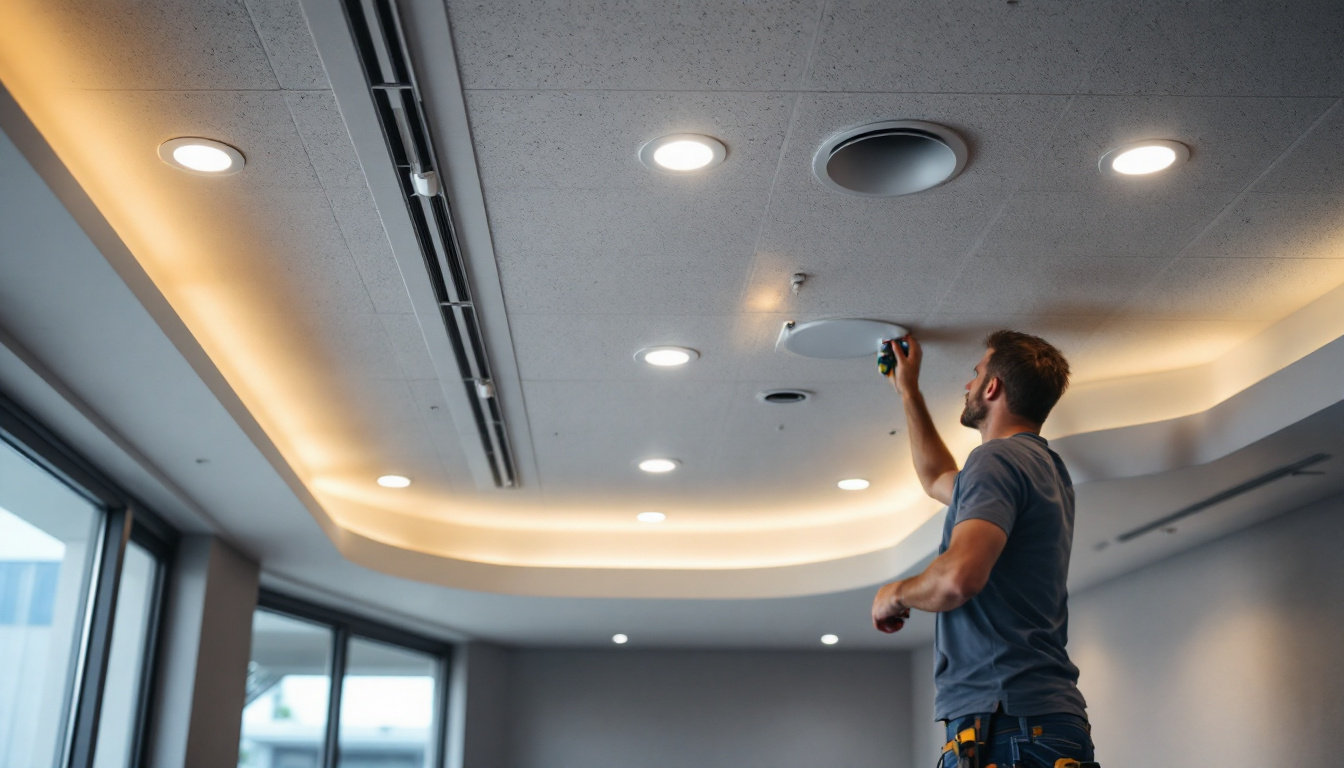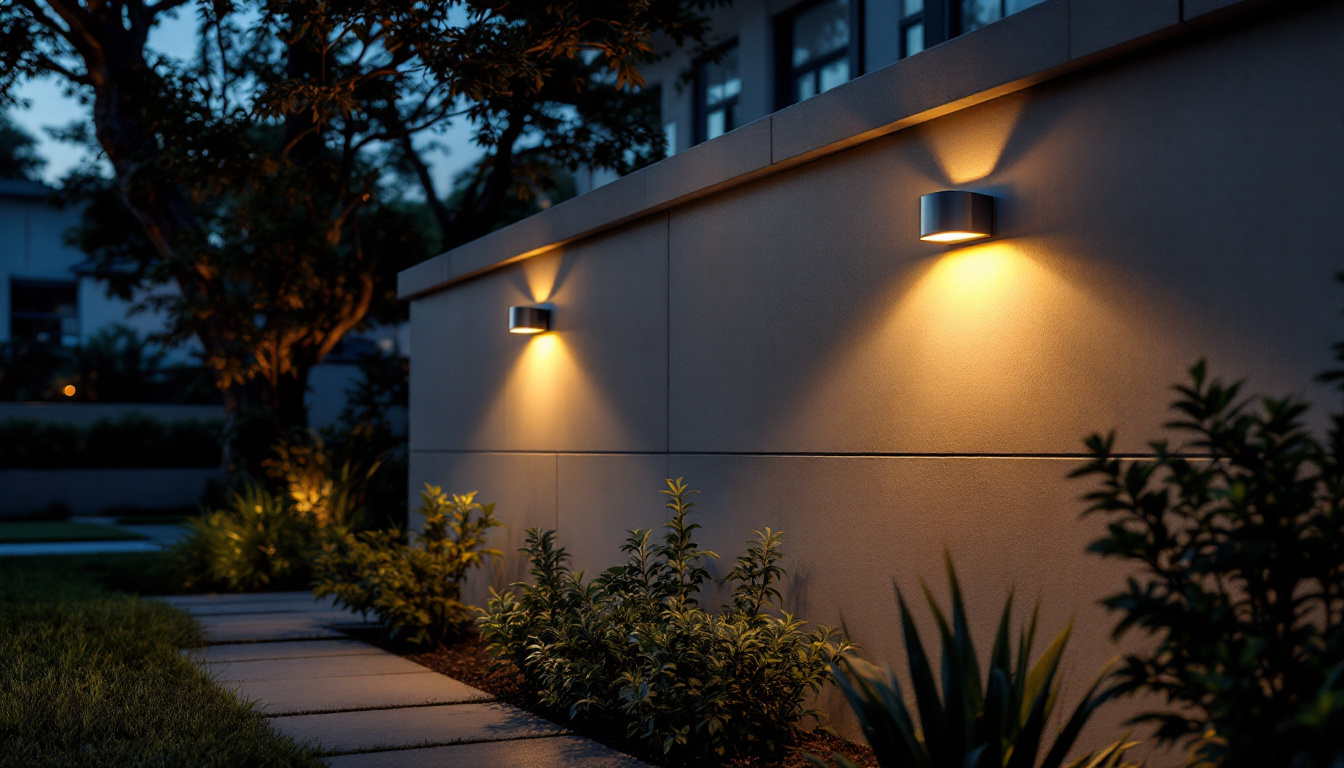

In the ever-evolving world of lighting design, drop ceiling recessed lights have emerged as a staple for both residential and commercial projects. For lighting contractors, understanding the nuances of these fixtures is not just beneficial but essential. This article delves into the advantages of drop ceiling recessed lights, their applications, and why every lighting contractor should be well-versed in their installation and maintenance.
Drop ceiling recessed lights, often referred to as pot lights or can lights, are fixtures that are installed above the ceiling line, creating a clean and unobtrusive look. These lights are designed to provide ambient lighting while minimizing visual clutter. Their installation involves cutting a hole in the ceiling tile or grid, allowing the fixture to sit flush with the surface. This seamless integration into the ceiling design not only enhances the aesthetic appeal of a space but also maximizes the available height, making rooms feel more spacious and open.
Understanding the basic components of these lights is crucial for any lighting contractor. Typically, they consist of a housing, trim, and a light source, which can vary from incandescent to LED options. The choice of light source impacts energy efficiency, longevity, and the quality of light produced. For instance, LED options are increasingly popular due to their low energy consumption and long lifespan, often lasting up to 25,000 hours, which significantly reduces the frequency of replacements and maintenance costs.
There are several types of drop ceiling recessed lights available, each serving different purposes and aesthetic preferences. Some of the most common types include:
In addition to these common types, there are also specialized recessed lights designed for specific applications. For example, “baffle” recessed lights feature a ribbed interior that helps to reduce glare, making them a popular choice for home theaters or media rooms where controlled lighting is essential. Furthermore, “new construction” and “remodel” housings are available, catering to different installation scenarios. New construction housings are used in spaces that are still being built, while remodel housings are designed for retrofitting into existing ceilings, allowing for flexibility in design and renovation projects.
Another important aspect to consider is the trim style, which can greatly influence the overall look of the lighting. Trims come in various finishes and styles, such as reflector, adjustable, or wall wash, each serving a unique purpose. Reflector trims are designed to enhance brightness and are often used in areas requiring more light, while wall wash trims create a soft glow along walls, perfect for accentuating textures or colors in a room. Selecting the right trim can transform the functionality and ambiance of a space, ensuring that the lighting complements the interior design seamlessly.
Drop ceiling recessed lights offer a multitude of benefits that make them an attractive choice for both contractors and clients. Their versatility and functionality are unmatched, making them suitable for various environments.
One of the primary advantages of drop ceiling recessed lights is their space-saving design. Unlike traditional light fixtures that protrude from the ceiling, recessed lights are flush-mounted, allowing for a clean, streamlined appearance. This is particularly beneficial in spaces with low ceilings, where hanging fixtures might feel overwhelming or obstructive.
Moreover, this design contributes to a more open and airy feel in a room, enhancing the overall aesthetic. For contractors, this means greater design flexibility and the ability to create visually appealing spaces without compromising on illumination.
With the growing emphasis on sustainability and energy conservation, drop ceiling recessed lights, especially those utilizing LED technology, stand out as an energy-efficient option. LED recessed lights consume significantly less electricity compared to traditional incandescent bulbs, resulting in lower utility bills for clients.
Additionally, many modern recessed lights come with features such as dimming capabilities and smart technology integration, allowing for even greater energy savings. Lighting contractors can leverage these features to offer clients customized solutions that align with their energy-saving goals.
While the benefits of drop ceiling recessed lights are clear, the installation process requires careful planning and execution. Lighting contractors must consider several factors to ensure a successful installation.
The type of ceiling structure and its height play a crucial role in determining the feasibility of installing recessed lights. In drop ceilings, the grid system must be compatible with the recessed light housing. Contractors should assess the spacing of the ceiling tiles and ensure that there is adequate clearance for the fixtures.
Moreover, the height of the ceiling will influence the type of trim and bulb used. For lower ceilings, shallow housing fixtures may be necessary to avoid overwhelming the space, while higher ceilings can accommodate larger fixtures that provide more light.
Proper electrical planning is essential for the safe and efficient operation of recessed lights. Contractors must ensure that the electrical supply is adequate for the number of fixtures being installed. This includes calculating the load and ensuring that circuits are not overloaded.
Additionally, contractors should be familiar with local building codes and regulations regarding electrical installations. Compliance with these codes is crucial for safety and can prevent costly rework or legal issues down the line.
The versatility of drop ceiling recessed lights makes them suitable for a wide range of applications. From residential settings to commercial spaces, their adaptability is unmatched.
In residential settings, drop ceiling recessed lights are often used to create ambient lighting in living rooms, kitchens, and hallways. Their ability to blend seamlessly into the ceiling allows homeowners to achieve a modern look without sacrificing functionality.
Moreover, these lights can be used in combination with other lighting options, such as pendant lights or wall sconces, to create layered lighting effects. This versatility enables homeowners to customize their lighting according to their preferences and needs.
In commercial spaces, drop ceiling recessed lights are frequently utilized in offices, retail stores, and restaurants. They provide even illumination that enhances visibility and creates a welcoming atmosphere for customers and employees alike.
Additionally, the use of adjustable recessed lights in commercial settings allows for targeted lighting, which can highlight products or specific areas within a space. This feature is particularly valuable in retail environments, where effective lighting can significantly impact sales and customer experience.
Like any lighting fixture, drop ceiling recessed lights require regular maintenance to ensure optimal performance. Lighting contractors should educate clients on the importance of upkeep and provide guidance on troubleshooting common issues.
Dust and debris can accumulate on recessed lights over time, affecting their brightness and overall appearance. Regular cleaning is essential to maintain their efficiency. Contractors can recommend using a soft cloth or a vacuum with a brush attachment to gently clean the fixtures without damaging them.
Additionally, contractors should advise clients on the importance of replacing burnt-out bulbs promptly. This not only ensures consistent lighting but also prevents strain on the remaining fixtures, which can lead to premature failure.
Despite their reliability, drop ceiling recessed lights can encounter issues from time to time. Common problems include flickering lights, dimming, or complete failure to illuminate. Contractors should be prepared to troubleshoot these issues effectively.
Flickering lights may indicate a loose connection or a faulty bulb. In such cases, checking the wiring and replacing the bulb can often resolve the issue. Dimming lights, on the other hand, may require inspecting the dimmer switch or ensuring that the correct type of bulb is being used.
The lighting industry is continuously evolving, and staying informed about future trends in drop ceiling recessed lighting can give contractors a competitive edge. Understanding these trends allows contractors to offer innovative solutions that meet the changing needs of clients.
Smart lighting technology is rapidly gaining popularity, and drop ceiling recessed lights are no exception. Many manufacturers are now producing fixtures that can be controlled via smartphone apps or voice-activated devices. This technology allows users to adjust brightness, color temperature, and even set schedules for their lighting.
For lighting contractors, incorporating smart lighting solutions into their offerings can enhance their appeal to tech-savvy clients who prioritize convenience and energy efficiency. Additionally, educating clients on the benefits of smart lighting can lead to increased satisfaction and loyalty.
As the demand for energy-efficient solutions continues to rise, manufacturers are focusing on developing recessed lights that meet stricter energy efficiency standards. This includes advancements in LED technology, which provides higher lumens per watt and longer lifespans.
Contractors should stay informed about these advancements and be prepared to recommend the most energy-efficient options to clients. Not only does this align with sustainability goals, but it also positions contractors as knowledgeable experts in the field.
Drop ceiling recessed lights are an invaluable asset for lighting contractors, offering a blend of aesthetic appeal, energy efficiency, and versatility. Understanding their benefits, installation considerations, and applications is essential for any contractor looking to thrive in the competitive lighting industry.
By staying informed about maintenance practices and future trends, contractors can provide exceptional service to their clients while positioning themselves as leaders in the field. Embracing the advantages of drop ceiling recessed lights not only enhances the quality of lighting projects but also contributes to the overall satisfaction of clients, ensuring long-term success in the industry.
Ready to elevate your lighting projects with the superior quality and value of drop ceiling recessed lights? Look no further than LumenWholesale, where we provide contractors with spec-grade lighting products at unbeatable wholesale prices. Our commitment to cutting out the middleman means you get the best value without inflated markups. With our wide selection that meets the highest industry standards and the convenience of free shipping on bulk orders, you can trust that you’re getting the most reliable and high-performance lighting solutions. Make your next project shine and experience the best in wholesale lighting at the best value with LumenWholesale.

Discover the top strategies lighting contractors use to optimize automatic light switch installations.

Discover the latest trends in outdoor LED lighting that every contractor should know.

Discover the essential role of receptacles in lighting projects and why every lighting contractor should be well-versed in their use.

Discover essential tips for lighting contractors to avoid common pitfalls when installing solar lights on outdoor walls.
Get notified when NEW deals are released.
Optimize your budget with wholesale discounts.
Only top-quality, specification-grade lighting products.
No additional costs at checkout - what you see is what you pay.
We understand the unique needs of contractors.